Podcast: Play in new window | Download (Duration: 25:05 — 29.0MB)
Subscribe: Apple Podcasts | Spotify | Amazon Music | Android | Pandora | iHeartRadio | JioSaavn | Podcast Index | Email | TuneIn | RSS | More
By Davy Crockett
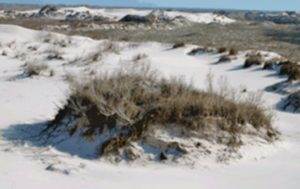 What was the first American ultradistance race in the modern era? Perhaps the answer is the Padre Island Walkatahon 110-miler, a three-day stage race that was started in 1953. It may have even been the first modern trail ultra in the world. This unusual race was a point-to-point race that ran along the sandy beaches of the Gulf of Mexico in Texas. Those who put it on were very forward-thinking, introducing features that would be used in ultras decades later. Previously long endurance races were mostly limited to professionals. This race was for everyone, the old, the young teenagers, and even women during an era when female participation in endurance events was viewed as inappropriate.
What was the first American ultradistance race in the modern era? Perhaps the answer is the Padre Island Walkatahon 110-miler, a three-day stage race that was started in 1953. It may have even been the first modern trail ultra in the world. This unusual race was a point-to-point race that ran along the sandy beaches of the Gulf of Mexico in Texas. Those who put it on were very forward-thinking, introducing features that would be used in ultras decades later. Previously long endurance races were mostly limited to professionals. This race was for everyone, the old, the young teenagers, and even women during an era when female participation in endurance events was viewed as inappropriate.
| Please consider becoming a patron of ultrarunning history. Help to preserve this history by signing up to contribute a little each month through Patreon. Visit https://ultrarunninghistory.com/member |
About Padre Island
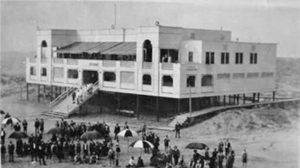

Padre Island, about 113 miles long, is the longest barrier island in the world. This long, skinny, sandy island is the second largest island by area in the lower-48 states. Only Long Island in New York tops it. In 1908 the first development was established on the island, the Gulf-Side Casino Hotel, near the southern tip of the island. But the hotel received serious damage from storms and hurricanes over the years. For many years it closed to make repairs. Finally in 1945 the top story of the hotel was taken off by a storm and the entire structure was finally demolished in the early 1950s.
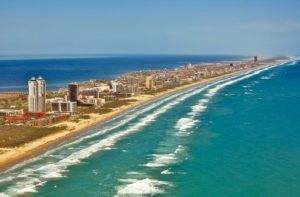

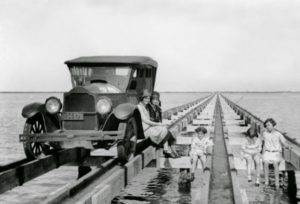

Around 1930 a causeway was built to connect Corpus Cristi to the northern end of the island allowing access to the Gulf’s beaches. During World War II, the northern section of the island was used as a bombing range. By 1953, the island was again undeveloped and used almost exclusively by ranchers. It wasn’t until 1970 that development started again.
Founding the Race
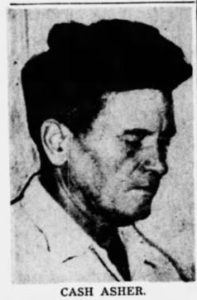

Asher named the race “Padre Island Walkathon.” The term ultramarathon would not be used until 1964. The controversial “walkathons” held in indoor halls had ceased by 1953, and that term would start to be used for any long walking event. This event sometimes also called a “Bunion Derby,” taking that name from a coast-to-coast event in the 1920s. Why walk and not run? In the 1950s the idea of someone being able to run ultra distances still was viewed as inconceivable. Word of the race was publicized, and registration opened in early 1953.
Race Format
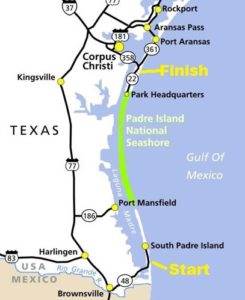

For the first year, the walkers would cover 25 miles the first day, 42 miles the second day, and 43 miles the final day. They would all camp at the start and then for each night after Day 1 and Day 2. A large support caravan of vehicles would go along with the walkers, providing food, medical treatment, news coverage, and transportation for those who dropped out. If a walker dropped out, they were expected to continue with the caravan to the finish. Entrants would to be provided tents.
The rules were pretty simple. Running was prohibited. The published rules stated, “anyone caught running will be thrown out of the race.” Beer or hard liquor were also prohibited during the race. Anyone who partook, would be disqualified automatically.
The event was scheduled for Friday March 27, 1953 and would end on Sunday evening. The race filled up with 70 daring starters. None of them had any true experience with this kind of event. They would learn “on the job.” The start location was at the southern tip of the island, near Port Isabel. The finish line was 110 miles to the north at Bob Hall Fishing Pier in Gulf Park across from Corpus Cristi, Texas.
The 1953 Contestants
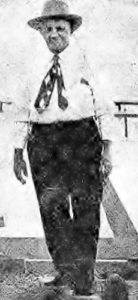

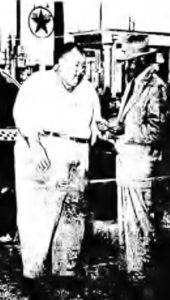

The oldest walker was 67 years old and the youngest starter was fifteen. Reverend J. D. Holland was a 67-year-old minister of Christ Church in Port Isabel, a small community across the water from the start. He was an experienced walker and tried to train for the event. About a week before the race he walked from Port Isabel to Brownsville, a distance of 30 miles, and reported that he “wasn’t a bit tired” when he finished. Reverend Holland said he entered the contest “because at one time, when his health was broken and he recovered by walking. He said, “I want to convince my grandchildren that they can come back after being very ill if they have the will do so.”
Another unusual contestant was Tiny Thompson, a 417-pound taxi cab driver from Brownsville, Texas. He was confident and said, “If my ‘dogs’ hold out, I’ll finish right up front.
A boy scout patrol from Edinburg, Texas was entered. Several young scouts with their leader took up the challenge. There was no discrimination against women, at least eleven were in the field and an award of $100 was put up by a local business for the first woman finisher.
1953 Race Preparation
All contestants were asked to camp out the night before at the start. Those coming from the north, near Corpus Cristi, were provided transportation the start. They met at 1 p.m. on Thursday, at the Padre Island Causeway near Corpus Christi. At high tide, they were given rides across the causeway and were driven down the beach, 110 miles, to the starting place on the southern tip of the island. Vehicles used were cars, jeeps, pickups and converted Army ambulances. Those coming from the south, near Brownsville, took a ferry across the water to the start camp (There was no causeway there yet). That night at camp a doctor checked out all the contestants. A member of the Red Cross would watch their health and pull them out of the race if needed.
Small airplanes would be used to fly news copy, photos, and radio recordings to Corpus Christi, and would come back with supplies. A Ham radio operator would travel with the walkers and stay in contact with the mainland. He was a member of the Corpus Christi Radio Club. The radio team on the mainland could relay real-time news to the public and families.
Day 1 – 1953
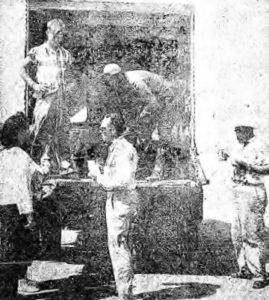

The race started at 8:30 a.m. with 70 starters beginning their 25-mile Day 1 quest. The ocean views were incredible, but the contestants quickly learned how tiring it was to walk in the sand. To make matters worse, the constant wind blew the sand everywhere. Sunburn was avoided by most of the walkers who wore long sleeves, long pants, sun “helmets” or caps, “and smeared protective oils on their hands and faces.” The ham radio guy reported that about 20 out of the field of 70 didn’t do much walking and soon quit. The support vehicles had challenges with continual mechanical troubles.
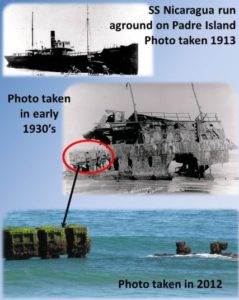

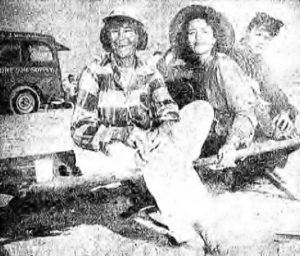

Jesse Shamblin (1911-1978) a 42-year-old plant worker from McAllen, Texas, finished Day 1 in first with 5:32 for the 25-mile segment. Bonnie White, employee at the Naval Air Station and Winnie Beth Brillhart, 41-year-old mother of four grown children, tied with 6:40.
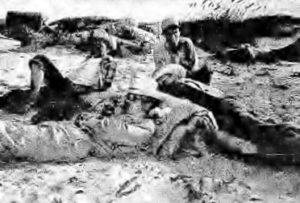

More than half the field, 40 of 70, didn’t make it to the Day 1 camp and were given rides to the wreck site. All the walkers were supposed to stay and ride with the company, but one DNF insisted to get a ride off the island and left early. All others stayed to cheer on the remaining walkers. Most of them established a close friendship as the traveled and camped each night. It was uncomfortably cold during the night.
Day 2 – 1953
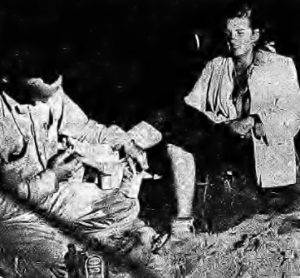

Twenty-nice contestants showed up for the Day 2 start at 6:45 a.m. Alice Chappell didn’t start because of a severe blister. Many courageous walkers who started the Day 2 stage of 42 miles admitted they doubted that they would make it to the next camp near Yarborough Pass. As they were walking along that day, Frank Jurecko (1920-1974) found a message in a bottle that had washed ashore on the sands and considered that a “good oemen”. Ricky Lutz used a walking stick and was nicknamed by his fellow-walkers, “The sheep herder.”
Day 2 took a heavy toll as 20 walkers didn’t make it all the way to camp and dropped out. Nine finished Day 2, including two women who decided to call it quits at that point, mile 67. Both were tied in time, the last two women in the competition so they split the $100 award. They were Robbie Pope (18) of Port Isabel, and Winnie Beth Brillhart (41) of Corpus Christi. Robbie Pope who said,“Next year we’ll know what we’re up against on this sand. Next year I’ll finish the walk.”
Day 3 FInish – 1953
Six contestants started Day 3 and walked up and over Yarborough Pass. Clifford Templemand, a college student gave up after six miles two others soon also dropped out during the grueling 43-mile final segment. Three remained and continued to the 110-mile finish at Bob Hall Fishing Pier in Gulf Park.
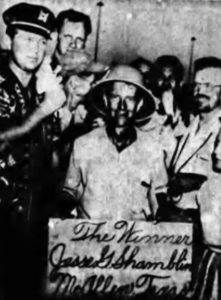

In first place was Jess Shamblin, age 42, of McAllen, Texas, with a total walking time of 28:48. He won $250. In second place was Frank Jurecko, age 32, of Corpus Christi, Texas with a total walking time of 31:14. He won $50. Amazingly in third place was fifteen year old boy scout, Charles Bolton of Corpus Christi. He won $40. Those that didn’t finish on Day 2 and 3 mostly had blister problems. They learned that the type of shoe worn was very important. The three finishers wore leather, solid shoes. Frank and Jesse wore high-top leather shoes.
Frank Jurecko took a day of work but returned to work two days after finishing. He said he was “pretty stiff and sore” with a swollen ankle, and some blisters. His wife said, “The boys at the plant told him to come on and they would carry him around so he wouldn’t have to miss work.”
Race Director Cash Asher, thought the event was a great success. Talking about the race volunteers and walkers who didn’t finish: “And I tell you that is the best bunch of people I’ve ever met in my life. Everybody pitched in and helped where they were needed.” A reunion was planned for two months later on the island at Gulf Park
The 1953 Padre Island Walkathon created quite a stir in Texas, opening minds to what truly was possible. Covering ultra distances could be accomplished by non-professionals.
The 1954 Race
For the 1954 Padre Island Walkathon, the segments for each day were adjusted to 40, 40, and 30 miles. The starters more than doubled to 148 contestants. The race got a lot of attention. Sponsors came forward. 7-Up Bottling Company furnished a truck to serve soft drinks along the way. A trucking company provided a wrecker to tow out any vehicles stuck in the sand. A local hotel provided all the meals for the contestants and staff from a mobile kitchen that was moved from camp to camp. The support crew that year included about 50 vehicles with medics, cooks, and record keepers.
That year the entry fee was $10. Each contestant needed bring their own bedding, cot and tent. The Race Director emphasized the race was hard and predicted the only about 13 of the 148 would finish. “It’s a long walk and only those who have trained for the event will have a chance of reaching the finish lines.”
1954 Contestants
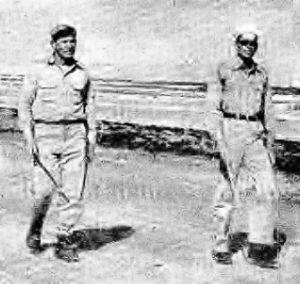

Defending champion Jesse Shamblin returned along with eight other race veterans including 16 year-old boy scout Charles Bolton and 68-year-old Reverend Holland. That year the contestants took training much more seriously and regularly trained walking on the island to get used to the sand.
Sergeant Rand Tellez of the State Guard Reserve Corps registered with a month to go. He immediately stopped smoking and started to walk 12 miles round trip each day to work. With a week to go he did a 45-mile walk without food or water to make sure he could at least handle the first day of the race. Rand was a 29-year-old father of seven children and served in World War II on aircraft carrier. He admitted that he didn’t walk much on the ship.


The Course Won That Year


By doubling the field in 1954, race director Cash Asher more than doubled the risk by growing the field too fast. Yes, he did bring in much more help but the race that year turned into a race director’s nightmare.
More news coverage came out that year. A local TV station covered the start. Two radio stations would tape segments for their broadcasts. Life magazine sent out a photographer to cover the race for their new sports magazine.
Soon after the start, terrible thunderstorms rolled in with hail and high winds. Sand pounded both walkers and cars. The walkers were miserable and they missed lunch when the lunch jeep didn’t arrive because of the bad conditions. To make matters worse, the supply vehicle got stuck in the sand and the contestants who made it to the Day 1 finish had to wait until 9:00 p.m. for dinner. Only 77 out of 148 arrived in time.
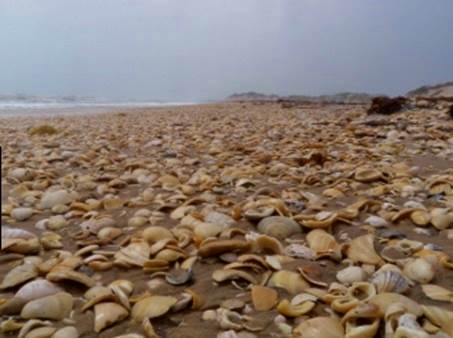

J.B. Outlaw, a highschool track coach had still been able to set a blistering pace on Day 1 and continued it on Day 2 averaging better than 4.5 miles per hour. His total time for 80 miles was 17:23. He and the walker in second place arrived at the Day 2 camp ahead of the vehicles because the news of the day was about the terrible conditions. Both claimed they had no blisters and no sore muscles.
Only 29 of the 148 starters reached camp on Day 2 by 8 p.m. which was the cutoff. Defending champions, Jesse Shamblin and Beth Brillhart were among the DNF casualties. But far worse, the equipment truck with tents and food was nowhere in sight. Without tents the contestants huddled around small fires and wrapped themselves in blankets. Food was supplied from spectators who still had extra picnic food. The 7-Up truck saved the day by picking up a huge amount of cooked meat, sandwiches and eggs when it went into Corpus Christi to get a new supply of soft drinks. It arrived in camp at 9:00 p.m. The equipment truck with the tents finally arrived at 11 p.m. Morale was boostde that year by using a generator for light. The previous year they only had bonfires and flashlights.
Only nineteen started Day 3. J.B Outlaw continued went on to win the event with a sub-24 time of 23:45. But it was very close. Second place was just 8 minutes behind. The women’s winner was Erna Lietzenburg, an employee at the local Naval Air Station. She finished in 23:53 and won a clothes dryer. Sixteen-year-old Charles Bolton finish in 29:40. Sergeant Tellez finished in 32:31. He walked half the course barefoot after water got into his shoes. Floyd Alexander, one of the brother’s team, finished in 28:16. Of the 148 starters, fifteen men and one woman finished all three days
Champion J.B. Outlaw said of his race experience, “it was as much a mental and emotional strain as a physical one.” The other finishers agreed. Erna, the woman’s winner mentioned how lonely it was at times, not seeing another walker in either direction. Another walker said “and when it rained Friday and the thunder was crashing and lightning was flashing all around and you couldn’t see any distance ahead, you began to wonder if you would come out alive.”
The disasters weren’t over. More than 2,000 cars made the trip over the causeway on Sunday to witness the finish and watch a beauty pageant. That caused a massive traffic jam getting to and from the island.
The 1955 Race
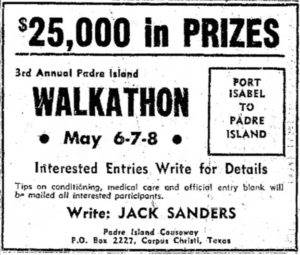



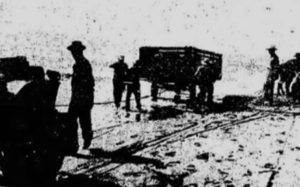

Day 1 was very hot causing many to drop out. Walkers were motivated seeing a 7-up soft drink truck in the distance that supplied cold drinks and salt tablets. Yes, ever in 1955 they understood the importance of salt. After Day 1, Charlie Riley, a 27-year-old insurance sale man and high school track coach. had the lead. He and prepared by walking hundreds of miles. The Day 3 start format was changed that year. The leader Charlie started at 7:00 a.m but the other walkers’ start time was determined by how far they were behind Charlie. He finished in first with a new course record, a very impressive 20:59. Twelve finished. Charlie won $500 and a used car.
Joyce Wickham, age 23, a draftsman for an Oil company, set the women’s course record 27:50 and was sixth overall. She won $250 and an automatic washing machine. About 15,000 spectators lined the beach at the finish. Instead of a belt buckle, all the finishers were awarded a cigarette lighter with “Padre Island Walkathon” and their finish place engraved on it.
The 1956 Race
The 4th annual edition the Padre Island Walkathon had 61 starters with 7 women. The overall winners of the previous years were all in the event, Jesse Shamblin, J.B. Outlaw, and Charlie Riley. It was announced that Sammy Baugh (1914-2008) a famous quarterback for the Washington Redskins from 1937-1952, was the referee for the event. His plane ended up being delayed and he didn’t fire the starting gun. Charlie held the lead each day and bested his own 1955 110-mile course record by 56 minutes with 20:03. He averaged nearly 6 mph for his last 30 miles. He said, “I lost seven toenails. It’s the pressure from walking, the blood builds up under the nails, then you have to put a hole in them to relieve the pressure. They fall off later.” 1953 champion, Jesse Shamblin came in third. Dale Cole walked the entire course barefoot.
Changed To a One-day 40-Miler
The race wasn’t held in 1957 because it lacked a title sponsor. Then the Port Mansfield channel was dug without a bridge cutting the island in half. The 1958 event was trimmed to a one-day 40 mile event, an out-and back from Bob Hall Pier to Caldwell Pier at Port Arkansas and back, which greatly simplified the support that would be needed. The difficult Big Shell section was no longer a part of the race making it easier. Newspapers started calling the event, “the wackiest walking event.”
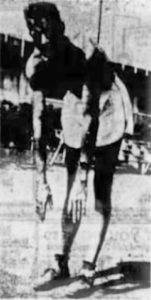

Charlie Riley again entered. He had been training hard. He said, “I figure I’ll have done 800 miles or more in training before the day of the race. And when I’m not training I usually run a mile and a half every morning.” The reason he was so fast was that he developed his own style and thought he could walk a 6:30 mile at full speed. Charlie explained his strategy for the 40-miler. “it depends on the compaction. I’d like to set a steady pace, but I’m not going to let anybody get far ahead of me. If someone wants to set a fast pace in the first 20 miles, I’m going to keep up with him.” Charlie wore soft leather shoes with “crepe soles”, shorts, a T-shirt and a billed cap. Charlie again won the event.
The first modern aid stations were established instead of using so many support vehicles following along. The stations were provided at 2.5-mile intervals. Food provided that year included sandwiches, chocolate, orange slices and salt tablets.
1959-1969 events
In 1959 the event had lost a lot of steam. Only about 20 walkers signed up and the distance was still 40 miles. But it still was a huge spectator event, mostly because The Miss Padre Island Pageant was part of the festivities. It was getting most of the attention in the press. Because of the small walker field, spectators were permitted to drive along the beach with the walkers but feeding them was strictly forbidden. During the 1960 race someone went out and stole three of the water cans. Emergency arrangements were made to get drinking water for the participants. In 1961 only about 15 walkers entered. The 1964 event was the 10th edition of the race. The Corpus Christi Junior Chamber of Congress was in charge, and they organized a beach party stretching the length of the course. A 100-mile boat race event was added up and down the coast. Three thousand treasure cans were dumped in the ocean to be claimed by spectators when they washed up on the island. All the events totally overshadowed the walkathon. A massive hot dog roast was held in the evening.
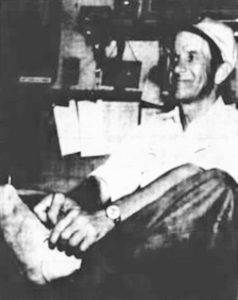

In 1965 only 15 walkers entered. The winner of the very first Padre Island Walkathon in 1953, Jesse Shambin, won for the third year in a row, He would train to tolerate dehydration and would not waste time stopping for water until mile 20. He also ran the entire 40 miles without eating at the aid stations. Over the years he had perfects his walking form. He said, “It’s section nature.” He held the 40-mile course record with 7:08, set in 1959. One year a dog took away his win. “A dog running loose on the beach took a chunk out of my leg. It kind of slowed me down.” He mentioned what he wore, “I wear shorts, a sports shirt, light leather shoes and anchor supports for my socks so they won’t slip down around my heels and start raising blisters.”
1969 was last year that the Padre Island Walkathon was held. It appears that none of the elite walkers became ultrarunners and that the race probably didn’t really influence future ultras, but it was fascinating to see how a supported trail race ultra developed over the years with aid stations. It also demonstrated to the public and participants that you didn’t have to be a professional athlete to achieve results that are amazing.
Sources
- Numerous news articles from The Corpus Christi Caller-Times, 1953-1958.
- The Brownsville Herald, Mar 19, 1953, May 6, 1955
- The Monitor (McAllen, Texas), Mar 30 1953, May 8, 1955, Aug 1, 1965
- Lubbock Avalanche-Journal, Mar 29, 1953
- The eagle (Bryan Texas), May 9, 1955
- Victoria Advocate (Victoria, Texas), May 10, 1955, 10 May 1958.
- Abilene Reporter, Jun 4, 1956
- Waco Tribune-Herald, May 25, 1958
